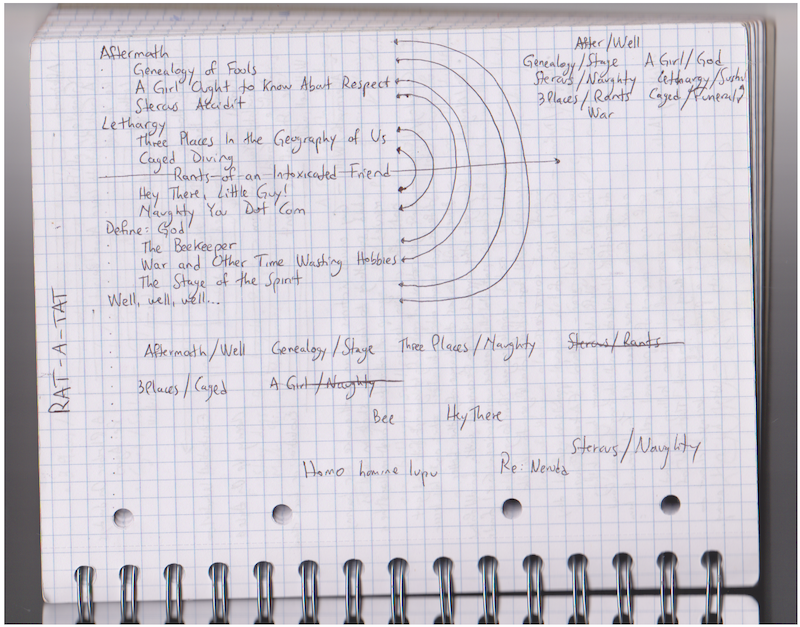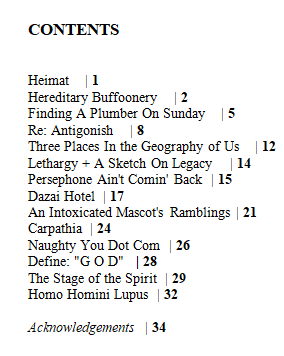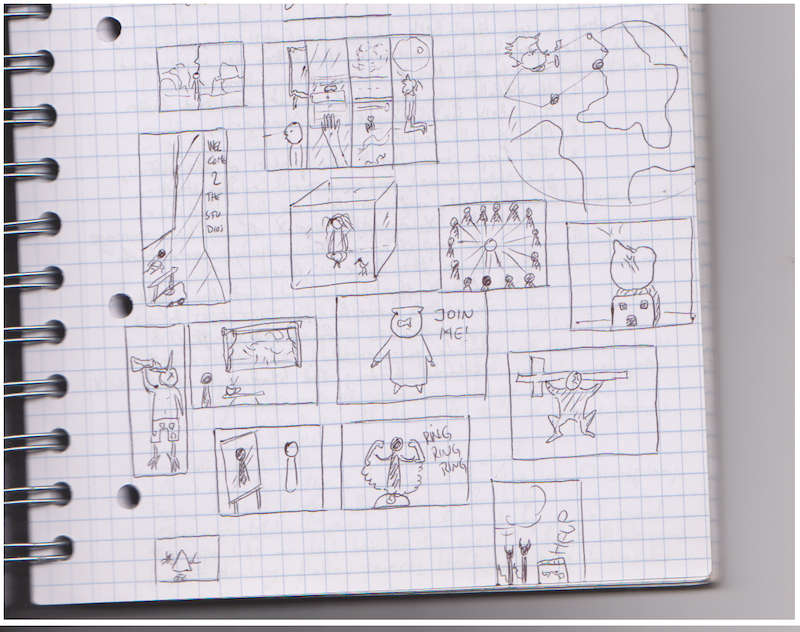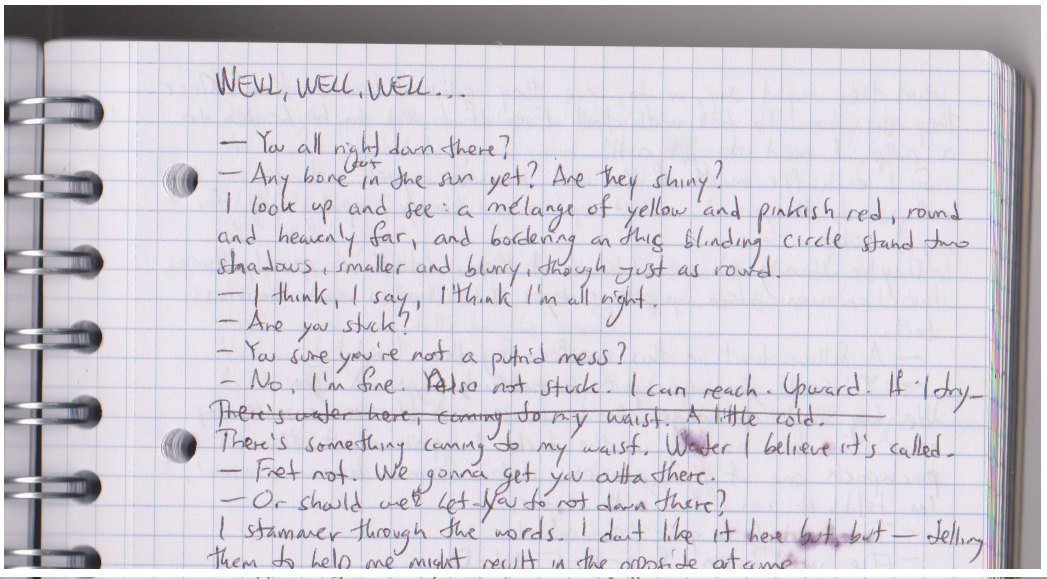Our Research Notes series invites authors to describe their process for a recent book, with “research” defined as broadly as they like. This week, Willem Myra writes about Kennel_Born from Thirty West.
+
 And when you eventually let it slip that you authored something that someone else for whatever screwy reasons agreed to publish, you will hear it pointed back at you. This interrogative accusation might not be the first thing out of their mouth. Might not be the second, either. But stay assured, you aren’t escaping a more kindly-put variation of the classic “So what is it that you thought you knew so much about that you had to burden down others with?”
And when you eventually let it slip that you authored something that someone else for whatever screwy reasons agreed to publish, you will hear it pointed back at you. This interrogative accusation might not be the first thing out of their mouth. Might not be the second, either. But stay assured, you aren’t escaping a more kindly-put variation of the classic “So what is it that you thought you knew so much about that you had to burden down others with?”
The answer you give is not always the one they expect.
The answer you give now — one, two, ten years after writing the book — might no longer coincide with the one you told yourself back in the outlining phase.
It’s alright.
You’ve changed. The work has changed in its paradoxically unaltered fixed words.
“Yes, but what is it about?”
Well…
+
In retrospect, pinpointing a theme is kids’ play. Especially when the book approaches you from behind and gently, warmly whispers its title into your ear. However, when I first sat down and decided to fire up ideas toward a form with more longevity than a single flash piece, all I had was the psychoanalytically ambitious intent of rendering myself — and within me, my blood-ties — through POVs external to my own. So how did I get from there to what Kennel-Born is today? Luckily, I left myself some notes.

This string of apparently-unrelated notions was supposed to summarize in no more than two words every story present in the collection. This is from pretty early in the notes, before a first draft even occurred, but already is visible a certain chirality informing the work. Subsequent models make it more evident. Only a couple pages after the snipped from above, my pad contains this attempt at forcing logic unto creativity:

Rat-A-Tat, as the collection was then known, was built around a central monologue of a drunk, disillusioned character whose life philosophy would’ve tied together the different tales of the first half, and prepared for the tonal shift of the second. Something didn’t sit right with it. It felt ham-fisted. During later rewritings, I deflated the importance of this thematic pillar and scattered some key lines all around the collection, making it feel more organic. Rants of an Intoxicated Friend eventually lost its centrality as the whole work went from fifteen to fourteen stories. A new order was imposed, ambiguity disseminated: where’s the fun if the answer is spelled out for anybody to grasp?
The story titles themselves went through some restyling in order to both make them less literal (“Oh, I guess this is simply a genealogic tree of a family of dimwits.”) and less symbolic. Compared to the final table of contents, you can see that almost all the titles have changed:

A sort of universal injustice (or, rather, a lack of justice and its antonym as defined by human society) bookends the collection by distilling itself into the unpredictability of natural disasters and the inanely irrationality of war. The former is supposed to make you question the narrating voice’s moral code, the latter to wonder if ever there is such thing as morality.
What these continuous edits betray is a puzzle-making in the process. Once I decided that I wanted to slap myself (and therefore my family) on to the paper, that I wanted the setting to mainly be Italy, despite some events originally taking place elsewhere more eastern, and once I picked what experiences to have translated into more-or-less surreal plot points, my research didn’t consist as much in hitting up Google for historical/technical jargon and details. My research consisted in finding the right voice, tone, narrator-protagonist distance for each piece. As such, I employed the Tarantino technique: I gathered as much material from some of my favorite writers (which you can easily deduce from my GoodReads profile: Italo Calvino, Haruki Murakami, Eugene Ionesco, Raymond Chandler, Steve Erickson, John Barth, etc.) and began devouring them looking of my own characters. Sometimes I’d find them in the very first line. Sometimes they’d be hiding at the end of the page, of the novel, in footnotes. They’re slippery, these characters, so a little yanking is necessary in order to force them to light.
Violence, sure. But art, too.
Aside from the stickmen I always draw for every protagonist I employ (and which I’m sparing everybody reading this because of their abhorrent ugliness), I’m in the habit of simplifying the plot in one barebones two-dimensional scene. If you’re bored, try to figure out which title belongs to each drawing. While Chicken-legged Bottle-downing Boxers-wearing Dude might reveal himself to be an easy match, Cross-squatting Guy might put up more of a challenge — and let’s not speak of that misshaped globe which I myself don’t remember in relation to what exactly I drew.

+
This collection was published in July 2018. I wrote it almost two years ago. If you were to ask me today “So, what’s Kennel-Born really about?”, I’d mumble my way through an answer before finding the right words to convince you there was a glimpse of logic (as the notes suggest) behind its writing. Though in the end, I find this simpler sketch to have stayed true to the nature of Kennel-Born:

This is a collection of people aiming for growth. People trying to make right by themselves. People trying to outgrown their shortcomings. Not always they succeed. Not always the world allows them to succeed.
To the scrupulous eye a discrepancy might become clear between the early structure of the collection and the ultimate TOC. A story by the title of Well, Well, Well… was discarded mid-drafts. This parable was intended to appear after the ending of the collection, as a Post Scriptum of sorts. It featured three characters, one of which struck at the bottom of the eponymous well, rumored to offer a solution to any material need in the world. The other two characters stumble upon it and are subjected to the prisoner’s attempt at convincing them to free him without admitting to the criminal intent that led to his fall. What he ignores is that the two are themselves devils. A comedy of errors ensues. Soon enough, all three end up stuck at the bottom of the well. Soon enough, all three start singing Disney animated film songs. I don’t claim to write easily-interpreted parables.

This collection begs for a readership, sure. But what it most needs is a proper dissection. A thorough analysis in search of the things even my notes forgot. 80 pages. A petite frog. Get it. Put a scalpel to its belly. See what it teaches you about me. What it teaches you about yourself. Kennel or bed — where were you born, and how far have you strayed from it?
+++